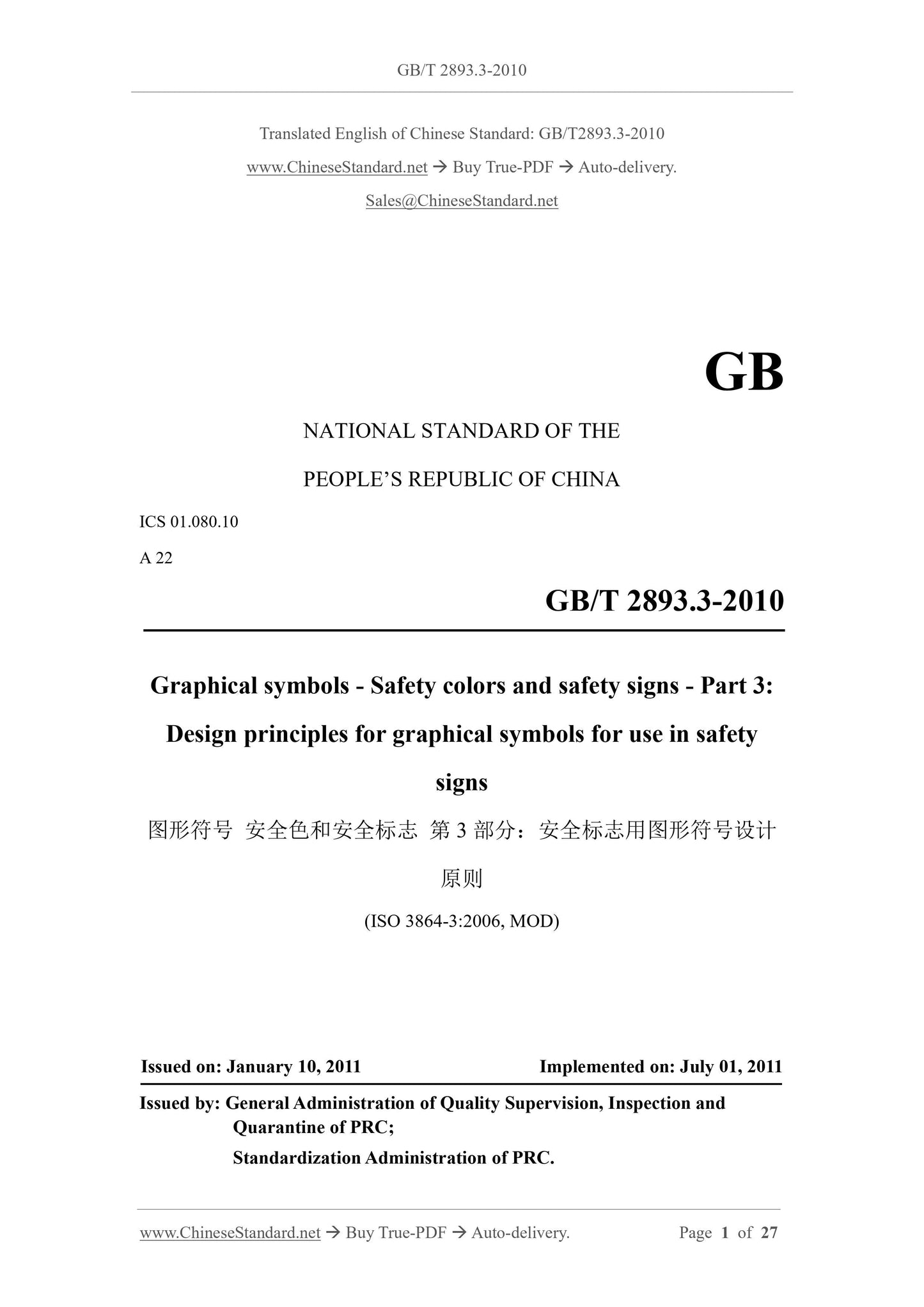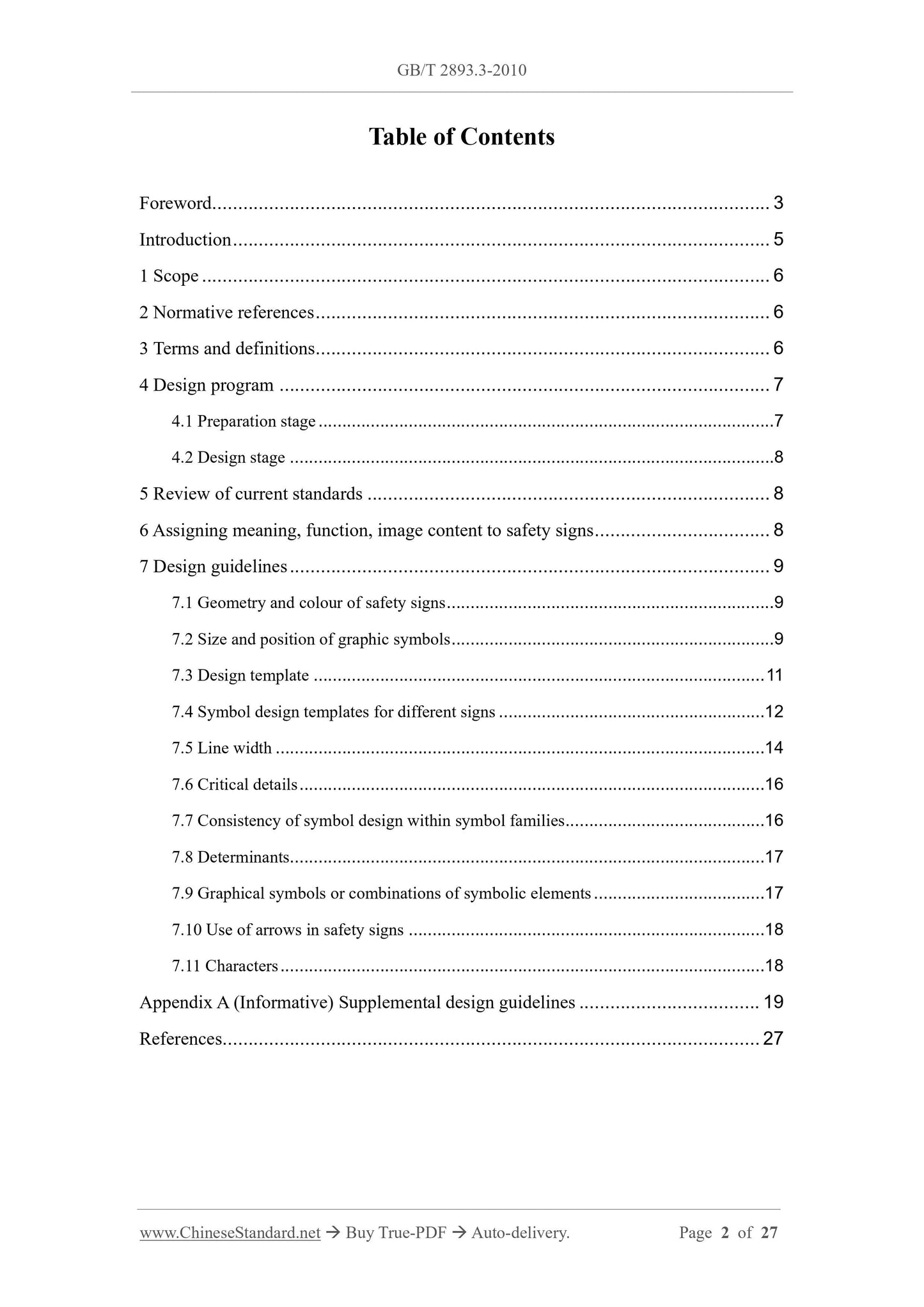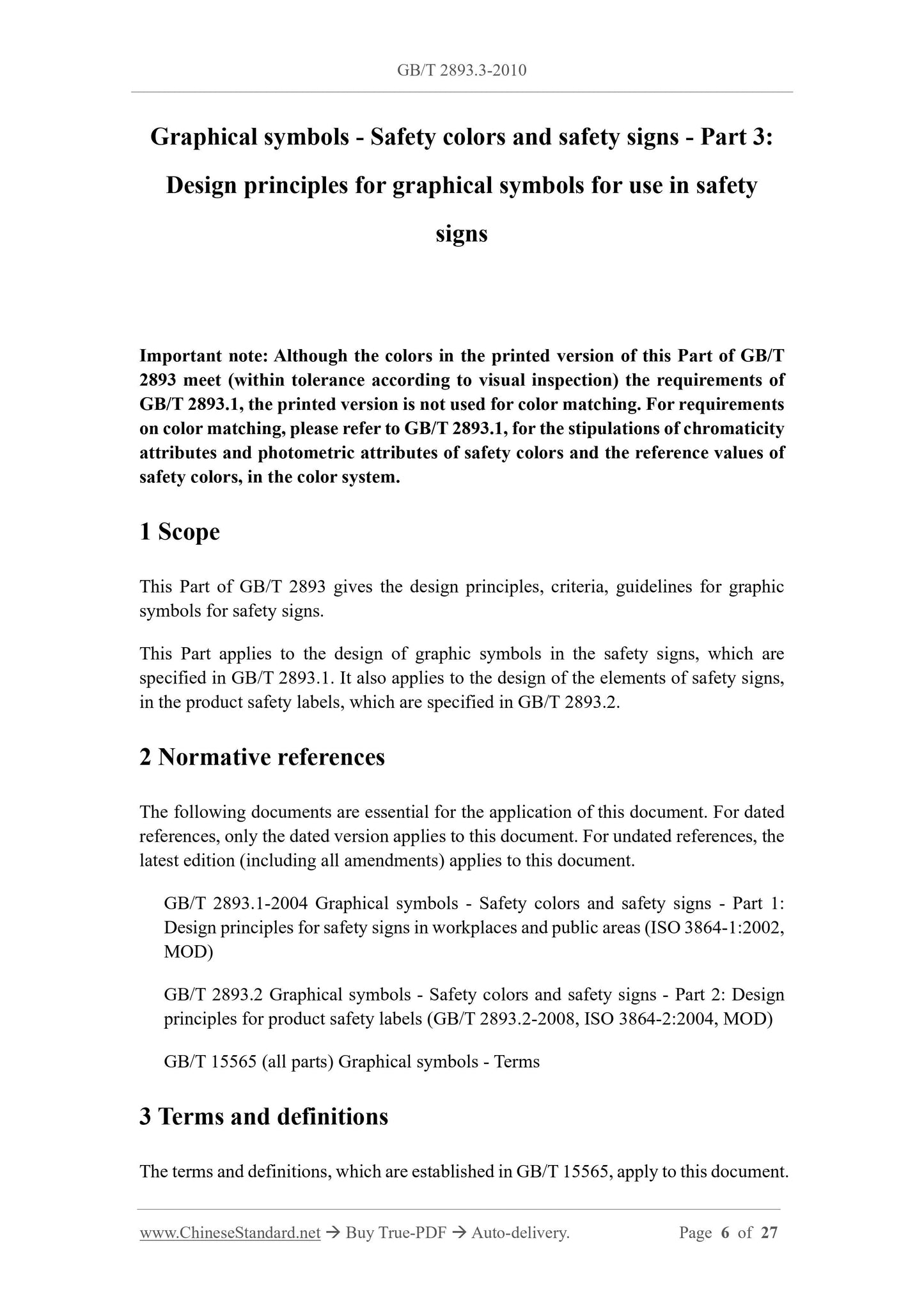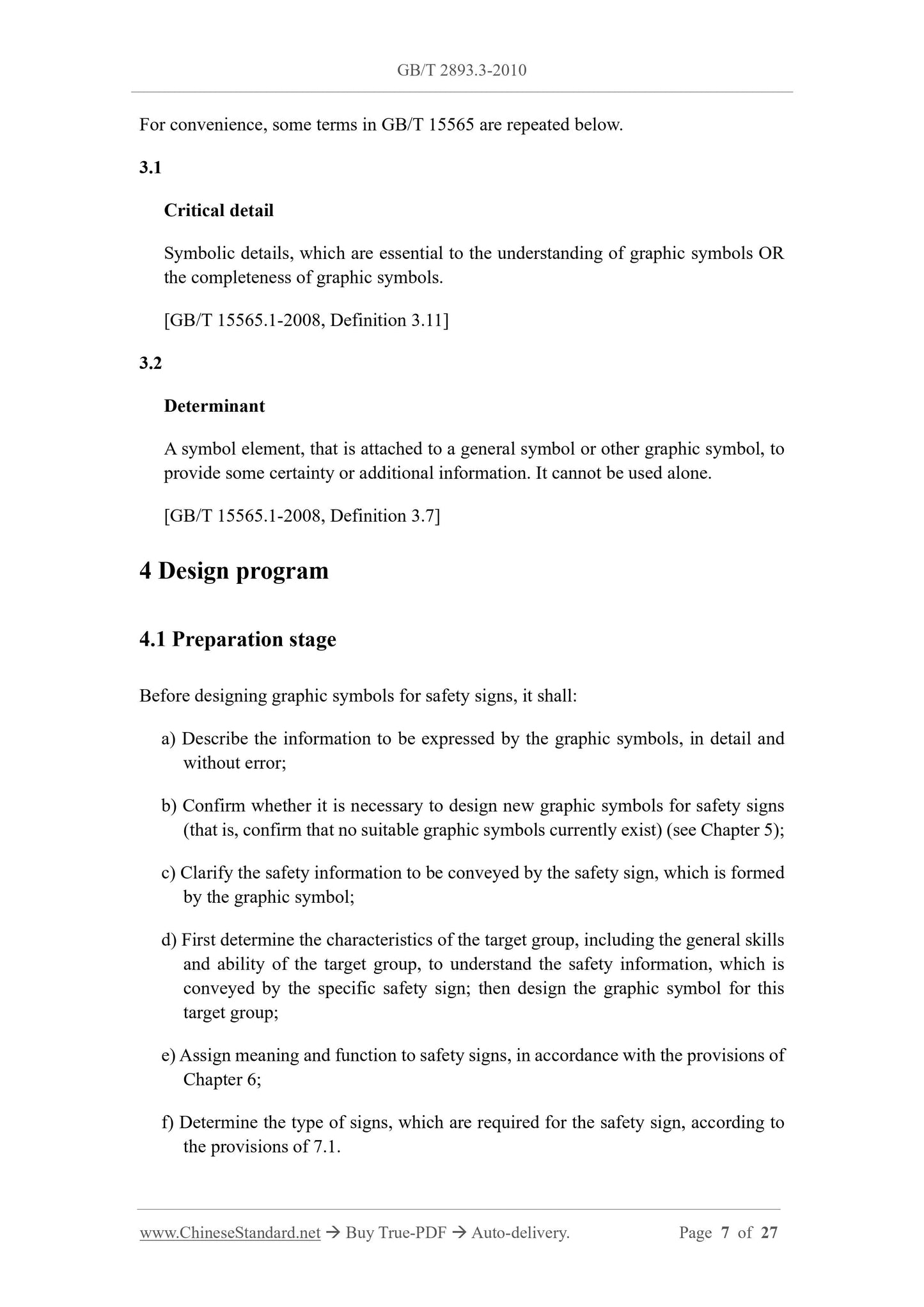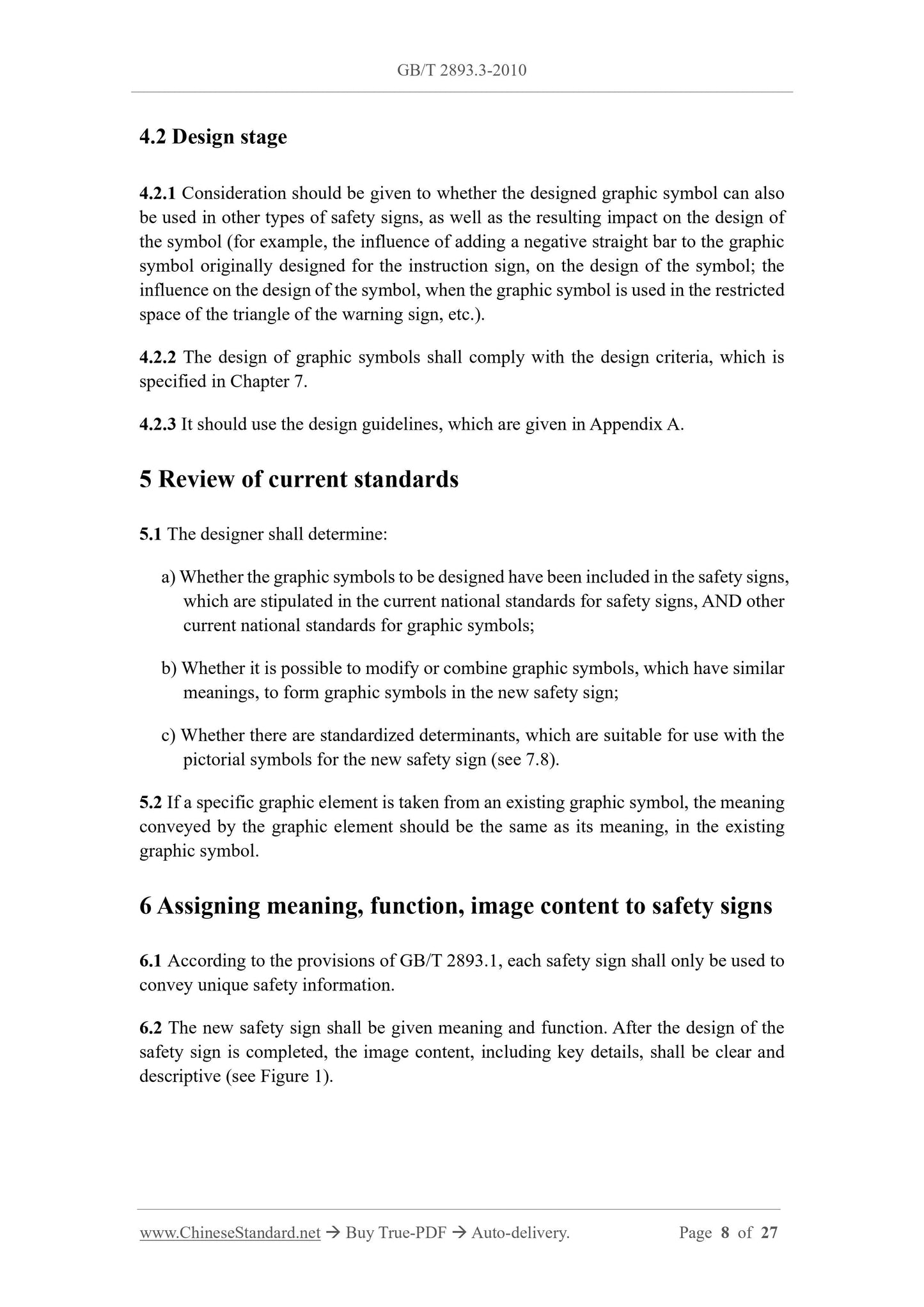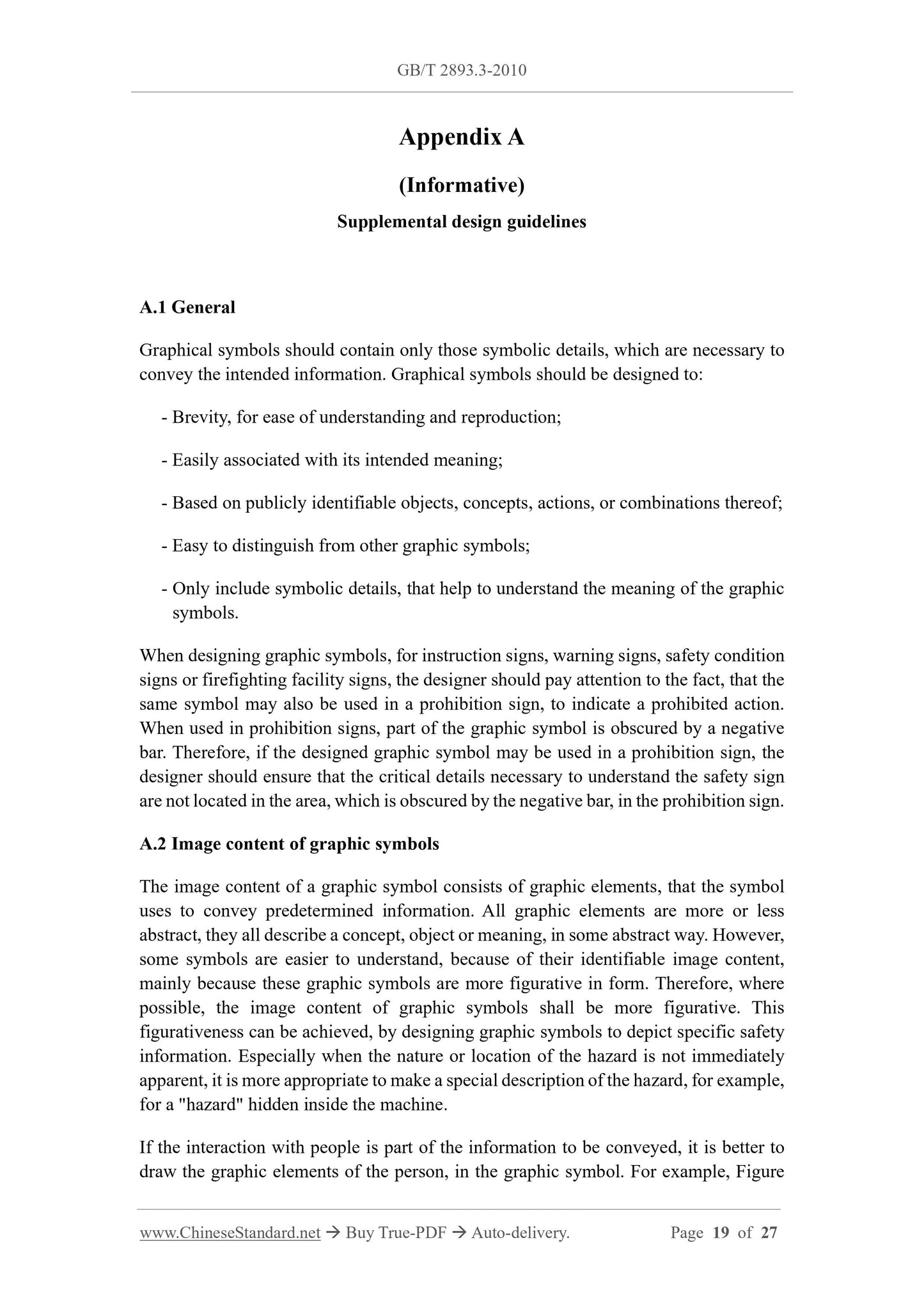1
/
of
6
www.ChineseStandard.us -- Field Test Asia Pte. Ltd.
GB/T 2893.3-2010 English PDF (GB/T2893.3-2010)
GB/T 2893.3-2010 English PDF (GB/T2893.3-2010)
Regular price
$125.00
Regular price
Sale price
$125.00
Unit price
/
per
Shipping calculated at checkout.
Couldn't load pickup availability
GB/T 2893.3-2010: Graphical symbols -- Safety colours and safety signs -- Part 3: Design principles for graphical symbols used in safety signs
Delivery: 9 seconds. Download (and Email) true-PDF + Invoice.Get Quotation: Click GB/T 2893.3-2010 (Self-service in 1-minute)
Newer / historical versions: GB/T 2893.3-2010
Preview True-PDF
Scope
This Part of GB/T 2893 gives the design principles, criteria, guidelines for graphicsymbols for safety signs.
This Part applies to the design of graphic symbols in the safety signs, which are
specified in GB/T 2893.1. It also applies to the design of the elements of safety signs,
in the product safety labels, which are specified in GB/T 2893.2.
Basic Data
| Standard ID | GB/T 2893.3-2010 (GB/T2893.3-2010) |
| Description (Translated English) | Graphical symbols -- Safety colours and safety signs -- Part 3: Design principles for graphical symbols used in safety signs |
| Sector / Industry | National Standard (Recommended) |
| Classification of Chinese Standard | A22 |
| Classification of International Standard | 01.080.10 |
| Word Count Estimation | 26,283 |
| Date of Issue | 2011-01-10 |
| Date of Implementation | 2011-07-01 |
| Quoted Standard | GB/T 2893.1; GB/T 2893.2; GB/T 15565.1; GB/T 15565.2 |
| Adopted Standard | ISO 3864-3-2006, MOD |
| Regulation (derived from) | National Standard Approval Announcement 2011 No.1 (Total No.166) |
| Issuing agency(ies) | General Administration of Quality Supervision, Inspection and Quarantine of the People's Republic of China, Standardization Administration of the People's Republic of China |
| Summary | This standard specifies the design principles of safety signs with graphic symbols. Standards and guidelines. This section applies to GB/T 2893. 1 required safety signs in the design of graphical symbols. Also applies to the product safety labels safety sign design elements GB/T 2893. 2 requirements. |
Share
